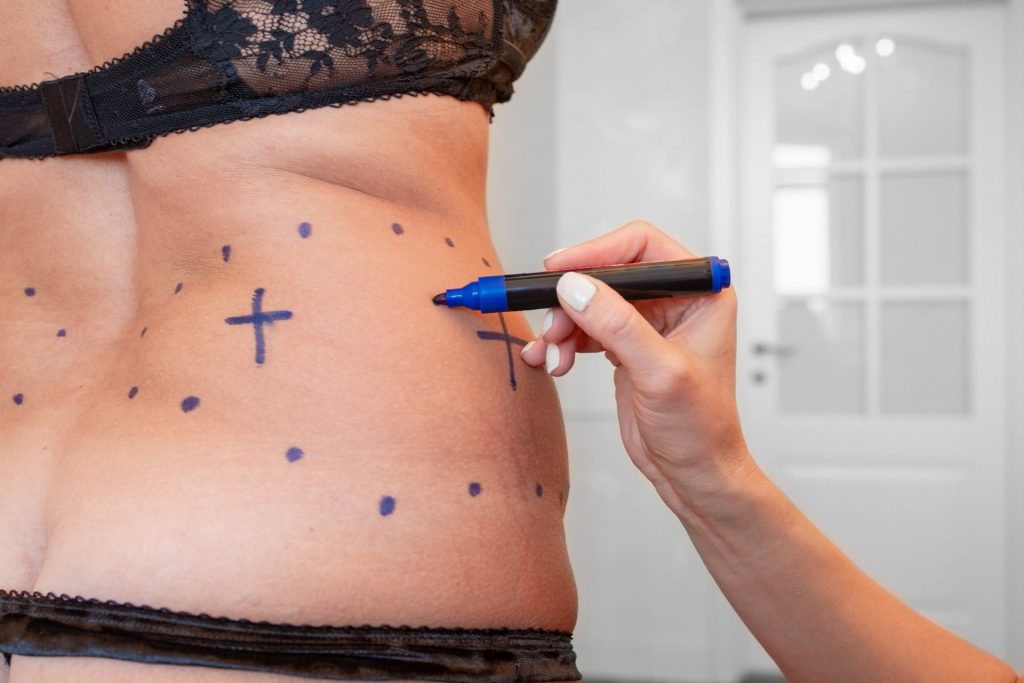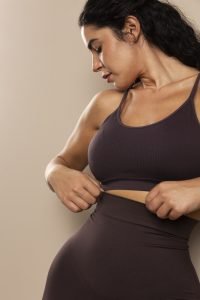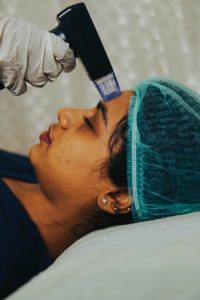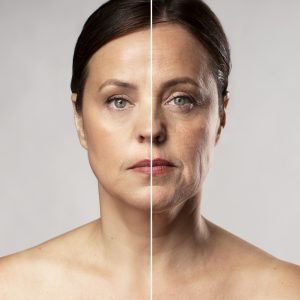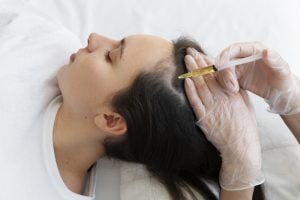With a lot of people making an attempt to regain their body-shape, liposuction has stepped in as a surgical boon that is helping people to meet the aspiration of a fit and fatfree body.
Liposuction surgery sculpts the body (hence also called as lipo-sculpturing) by eliminating unwanted pockets of exercise/diet-resistant fat from the buttocks, hips, love handles, saddlebags, thighs, calves, ankles, breas-ts (including male breas-ts), back, arms and neck.
Liposuction is a plastic surgery technique that aims to reduce or eliminate specific accumulations of fat in different areas of the body that do not respond to classic slimming treatments or exercise.
From a genetic viewpoint, each one of us is born with a predetermined number of fat cells. Therefore the hereditary factor will be crucial for the accumulations of fat in the same area as parents, grandparents, children, etc.
Hence when people gain and lose weight, certain areas of the body tend to develop deposits of unwanted fat that can be difficult to get rid of through diet and exercise. Liposuction can offer permanent removal of these fatty cells. Hence it is proving to be most effective and in-demand surgery.
Basis for liposuction
There are a lot of myths or misunderstandings related to liposculpture. “It always comes back”, “The fat moves”, “this is always temporary”. The fat cells are physically removed and in an adult no new fat cells are produced in normal circumstances. This means that at the treated site the number of fat cells will be reduced after the treatment. This will remain so as long as you continue to eat in the same way or maintain a similar lifestyle. When your weight increases after liposuction your body stores the excess calories in the form of fat, but rather at places other than where the fat was removed. That is why it is popularly said that “The fat has moved”. This is obviously not true.
Liposuction is not a method to lose excess body weight, but a shape correction that will give you a more ideal silhouette in a permanent way.
“Liposculpture” literally means “sculpting the fat”. Our philosophy is that the canula is akin to a paint brush, and we paint out the beauty from within! Indeed, the surgeon has the ability to permanently reduce or completely eliminate the unwanted fat deposits on your body. This can be done under local or general anaesthesia.
Another limiting factor is the elasticity of the skin. A liposuction is ideal for someone who has firm, elastic skin that will easily adapt to the reduced volume. When your skin is less elastic or when very large volumes are removed, there is a chance that you will have a skin surplus afterwards. In some cases, this surplus must be surgically removed. Your surgeon will almost always be able to predict this in advance
When to consider Liposuction?
- If you have localized areas of fat deposits that are disproportionate with the rest of your body.
- If you would like more definition or a sleeker contour in certain areas of your body.
- If your skin elasticity is good (Liposuction removes fat, but does not tighten skin).
Which areas can be treated with liposuction?
Localized areas in the body with stubborn deposits of fat can be treated. These areas can be:
- Cheeks, Jowls and Neck
- Upper Arms
- Breas-t Or Chest Areas (males)
- Back (upper and lower)
- Abdomen And Waist
- Hips and Buttocks
- Inner and Outer Thighs
- Inner Knee
- Calves and Ankles
What are the different types of liposuction?
Suction-assisted liposuction (SAL), the most traditional form of liposuction, draws fat out with a vacuum. This procedure involves the removal of unwanted fatty deposits from specific body parts. It is the oldest and time tested form of liposuction.
Power-assisted liposuction (PAL) is traditional SAL, but with the use of an addition to increase the motion of the cannula that speeds up fat removal.
MicroAire is a power-assisted liposuction (PAL) technique which was devised to reduce the physical challenges posed by traditional liposuction. The surgical instrument used for MicroAire is fitted with a power-assisted cannula that produces an extremely gentle back and forth movement which helps it to pass through the toughened fibrous tissues of fat with ease, whilst offering a great precision and making the surgeon’s job remarkably easy. The tissues are not damaged or torn apart, which means that the fat that is removed can be used for autologous grafting of other areas, if the need be. Visit our partners, – leaders in fashionable footwear!
Hi-Definition Liposuction is an extremely successful technique when it comes to targeting small areas of stubborn fat. It works by selectively removing fat from small areas surrounding specific muscle groups. Thus, the muscles in question become more visible while defining the natural muscle contour. This technique is focused on precision and it removes superficial and deep fat deposits to enhance the underlying musculature. It is quite successful in people looking for defined, muscular and athletic abs. Vaser Hi-Definition is the ultimate answer to people who work-out regularly but are unable to achieve the washboard abs look. It equally works good for people who are tired of carrying a heavy abdomen.
VASER: This procedure involves the use of ultrasound technology in emulsifying the fat in your body for ease of removal. VASER stands for Vibration Amplification of Sound Energy and Resonance, is again a highly sophisticated and one of the more modern techniques used for performing liposuction. VASER is performed by using a device that produces sound waves of very high frequency that help in liquefying the stubborn fat deposits in small areas. This sound wave producing device which is 3mm in size is inserted through small incisions which are made after administering local or general anaesthesia. The high-energy ultrasonic (sound) waves that are produced from the device vibrates the fat cells making them considerably loose as they start to melt. After the melting takes place, the sound device is removed and a cannula is inserted for the vacuum suction of fat out of that small area.
LASER assisted helps by disruption of fat cells by laser.
All techniques work perfectly well for areas like belly, arms, leg, waist, neck, knees, buttocks, thighs, side handles, ankles, calves and male breas-ts. But, one must remember that more often than not, liposuction makes a part of more than one procedure to bring the body to desired shape and contour. The elasticity of the skin is one of the factors that works in the favour of liposuction. Also the procedure is operator dependent. The skill of your surgeon is also just as important as the machine used!
What to expect with Liposuction surgery?
A certain amount of fat is important for our well-being. Directly below the skin we have a layer of fat, known as metabolic fat. This fat, which contains all the vessels and nerves that nourish the skin and is also the thermostat of our body temperature.
Between this metabolic layer and the muscle, we have the storage fat. These stores of fat are located in different parts of the body, for example under the chin, the hips, thighs, knees and ankles. This subsidiary fat is suitable for liposuction.
Procedure of Liposuction Surgery?
Technical advances in the field of liposuction mean that small area liposuction can also be carried out under local anaesthetic with sedation. This allows the patient to return home after the completion of the clinical liposuction and to carry on which a normal life except for sport or any activity that involves hard physical effort, after 24 hours, with the appropriate medical authorization.
The technique consists of making a small incision in a hidden place where the fatty area is situated. Next, a pencil-sized cannula is inserted. Which is connected by means of a plastic tube to a suction apparatus.
We only suction fat from the “storage” area, never from the metabolic area. This procedure, which causes no pain, is of approximately 25 minutes’ duration for each area. When the suction is completed, a stitch is put in place to close the keyhole incision. Immediately afterward of a dressing is put in place, compressing the suctioned area.
Postoperatively antibiotic therapy is prescribed for about 3 days.
How is the recovery after liposuction surgery?
The recovery time depends upon the area which is liposuctioned and any associated procedures. Usually, only liposuction patients can go home the same day.
Patients experience mild to moderate pain for first 72 hours for which painkillers are prescribed. Post 3 days, the patient has mild swelling that gradually disappears in the next 2-3 weeks. Depending upon area of the surgery, most patients can resume work after 2-3 days if it is desk job. Strenuous activities are to be restricted for 3-4 weeks. The timelines, however, differ on an individual basis.
Patient is advised to wear a pressure garment during first 4-6 weeks post surgery to keep the contours as designed during surgery.
Post-operative protocol
As oedema fluid gets re-absorbed and the bruising disappears you will notice the appearance of asymmetries and irregularities in the suctioned area, with some areas more hardened than others. This is normal and tends to disappear within a few weeks. We recommend that after a week you come to our clinic for the removal of the stitches and for a regular check-up.
